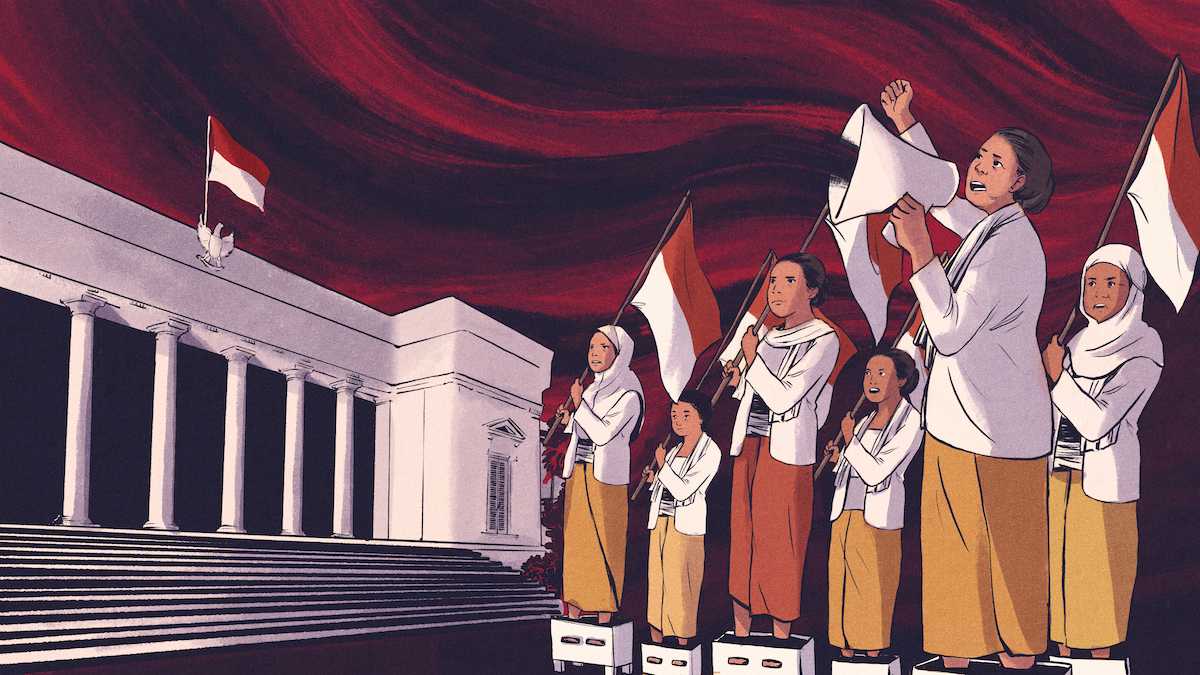- Across Indonesia, hundreds of communities are in conflict with companies seeking control of their resources.
- In some cases, the resistance has been led by women.
- Journalist Febriana Firdaus travelled across the country to meet grassroots female activists, to delve into the story behind their struggle. This article is part one of a series about her journey, which has also been made into a film, Our Mothers’ Land.
Serene, prosperous, fertile. These words come to mind as I stand at the top of a hill in Tegaldowo village, on the island of Java, in Indonesia, one Sunday evening in 2019. It is an idiom used to describe this giant island, with its rich soils, verdant rice paddies and teak forests. But the tranquility hides a more turbulent story.
Across Indonesia, the world’s third largest democracy, mass demonstrations have erupted. Some 3,000 kilometers (1,864 miles) to the east, anger at decades of mistreatment of indigenous Papuans has spilled over into violence. In the capital, Jakarta, students are taking to the streets in their thousands, protesting against a raft of new laws many fear will erode civil liberties.
Among the most contentious features of the new legislation is concern that it will enable the government to criminalize farmers and activists fighting against extractive companies taking their land. Already, hundreds of communities are locked in simmering conflicts with firms that have logged their forests, mined their mountains, and transformed their farmland into plantations. Many of these people once hoped that the president, Joko Widodo, would tip the scales in the favor of the powerless.
But in the coming months those hopes will be dashed. By November 2020, the government will sign into effect sweeping new legislation that appears to entrench the power of oligarchs, and of the private firms responsible for damaging the nation’s environment, including its vast rainforests.
For many communities engaged in the fight to protect land rights and the environment, the hills in which I stand hold huge resonance.

Serene, prosperous, fertile. These words come to mind as I stand at the top of a hill in Tegaldowo village, on the island of Java, in Indonesia, one Sunday evening in 2019. It is an idiom used to describe this giant island, with its rich soils, verdant rice paddies and teak forests. But the tranquility hides a more turbulent story.
Across Indonesia, the world’s third largest democracy, mass demonstrations have erupted. Some 3,000 kilometers (1,864 miles) to the east, anger at decades of mistreatment of indigenous Papuans has spilled over into violence. In the capital, Jakarta, students are taking to the streets in their thousands, protesting against a raft of new laws many fear will erode civil liberties.
Among the most contentious features of the new legislation is concern that it will enable the government to criminalize farmers and activists fighting against extractive companies taking their land. Already, hundreds of communities are locked in simmering conflicts with firms that have logged their forests, mined their mountains, and transformed their farmland into plantations. Many of these people once hoped that the president, Joko Widodo, would tip the scales in the favor of the powerless.
But in the coming months those hopes will be dashed. By November 2020, the government will sign into effect sweeping new legislation that appears to entrench the power of oligarchs, and of the private firms responsible for damaging the nation’s environment, including its vast rainforests.
For many communities engaged in the fight to protect land rights and the environment, the hills in which I stand hold huge resonance.It is not just a hill, but a karst: a limestone formation that undergirds the North Kendeng Mountains and stretches 180 kilometres east to west. The rock has been eroded over time to form a giant warren of underground caves and rivers, providing clean water to the people of the region throughout the year.
The indigenous people of Kendeng consider the karst to be their Ibu Bumi — their Mother Earth. She nurtures and even breastfeeds the land, in their lore, allowing them to grow rice and other crops.
“Mother Earth has given, Mother Earth has been hurt, Mother Earth will seek justice,” sings Sukinah, a farmer who accompanies me as she patiently checks the corn in the field that surrounds us. She moves nimbly, dressed in slippers and a traditional Javanese blouse called a kebaya.
The song is an anthem for a group known as the “Kartinis of Kendeng,” comprising Sukinah and eight other women farmers. The Kartinis of Kendeng led the resistance against the construction of a cement factory on their lands that would be fed by limestone mined from the karst.
In a nation replete with stories of social and environmental injustice, the Kartinis of Kendeng captured the public attention when they set their feet in cement outside the presidential palace in Jakarta. It was a visceral display of protest that powerfully symbolised the desperation of wong cilik, the “little people,” in their struggle against investors backed by powerful politicians.
I came to visit Sukinah at the start of a journey in which I would travel across Indonesia, an archipelago home to hundreds of ethnic groups and spoken languages, to meet women who had led grassroots activist movements. I wanted to find out what made these women take a stand and what obstacles they faced as they fought for their land rights. They were farmers, weavers and housewives in remote, rural communities, yet they had risen to become leaders.
Our Mothers’ Land, the feature film about Febriana’s journey:
From Timor in the east to Aceh in the west, the women I met faced intimidation, violence and even prison, due to their peaceful efforts to protect the culture and livelihoods of their people.
They not only faced a crooked bureaucracy and repressive security forces; they also struggled for recognition within their own communities, in a male-dominated society in which they were regarded as second class. I learned that in many cases, they had become activists because they, as women, were the people who cooked and cleaned for their family, and so they knew they would feel the impact if the water became polluted and farmland disappeared.

Some of them won global recognition and international awards. I wanted to find out what happened after the spotlight had moved elsewhere. I found that many still bear the scars of those years of activism, through physical injuries, missed opportunities, years in prison, and even friends whose lives were lost to the cause.
I also learned more of the enduring cultural connection between women and the environment. Across Indonesia, I found women who cared for their families, and who understood profoundly the importance of rainforests, mountains and land for the survival of their communities. Everywhere, the natural world was given feminine form, and women were fighting for it.
Through the story of my journey, I want to bring you into their homes, to see their lives, and to know their stories. It starts with the Kartinis of Kendeng.

Before the protests began, Sukinah lived the ordinary, but hard, life of a rural woman. She would wake up at 4 a.m. and go straight to the kitchen, making coffee for her and her husband, and cooking rice. After breakfast, she and her husband would work in their fields until 5 p.m. Most of the day they would be outside, with nature. At harvest time, both Sukinah and her husband would stay in a hut in their field, to finish cutting the corn or gathering rice.
The movement began to stir in 2014 when the villagers learned that a state-owned cement company, PT Semen Indonesia, was in the advanced stages of a plan to mine the karst. Without the villagers’ knowledge, two years earlier, the governor of Central Java, Bibit Waluyo, had issued an environmental license. It was one of the most important licenses the company would need to begin operating. It should have been issued after the community was consulted as part of an environmental impact assessment.
Some villagers had seen a draft of the assessment as early as 2010, and raised concerns that it failed to identify the existence of underground springs. After that, though, they were cut out of the process, Indonesia’s National Commission on Human Rights reported in 2016.
The limestone that gives the Kendeng karst its character is also the key ingredient in cement. The Kendeng Mountains had been targeted by cement companies since the 1990s, but by the 2010s interest had stepped up, stimulated by government investments in infrastructure.
An assessment commissioned by the national government found that the demand for clean water for more than half a million people living throughout the North Kendeng Mountains already exceeded the supply. The karst was crucial for maintaining that supply, acting as a sponge that released clean water through the dry season. But the provincial government had prioritised mining the limestone, threatening to significantly reduce and pollute the water supply as firms ground down through subterranean springs and rivers.

To find out what the factory might mean for them, the villagers visited the neighbouring district of Tuban, where Semen Indonesia had been operating a factory since the early 1990s. “They saw firsthand that the exploitation in Tuban had ruined everything,” Sukinah told me. “Damaging the environment, damaging the community, culture, social, everything.”
The threat of mining had already provoked opposition throughout the North Kendeng Mountains. In 2011, thousands of villagers reportedly gathered outside the district parliament building in the district of Pati, protesting against another Semen Indonesia mine. The following year, people from three districts amassed outside the Central Java provincial parliament.
In June 2014, as Semen Indonesia prepared to lay the first stone in the construction of its factory, Sukinah and other women decided they would be there to oppose it.
“To fight for the environment, you don’t have to be a man,” Sukinah told me. “Especially because it’s us [women] who are the first to feel the impacts, as we are the first ones to use water, to cook.”
But the decision to place the women on the front lines was to maintain what they hoped would be a peaceful protest, in the face of the provocation they expected to occur. They knew they would face the police, and potentially violence.

“If the men were there, their blood could become angry,” Sukinah said. “The women had to stay in control to avoid violence. Or else people could have been killed.”
When the day came, some 100 women gathered at the road to the construction site. Though it began peacefully, by November the police and military sought to end the action. Video footage shows women thrown around, their placards ripped away. They would maintain the protest for two years.
“Even though there was violence from the authorities, from thugs, we never gave up,” Sukinah told me. “We kept going. Because this is for our children and grandchildren in the future. If the mountain is damaged, it will be on us.”
Like most Javanese, Sukinah is a Muslim. But she also subscribes to the philosophy of Sedulur Sikep, or Saminism, a local belief that emerged among followers of a religious teacher named Samin Surosentiko in the late 19th century.
I find it easy to understand her decision to embrace this belief. Saminists have a long tradition of opposing outside authority, resisting the taxes, forest regulations and bureaucracy imposed by the Dutch colonial administration. They believed that land, water and forests are common property, to be used for the common good. They rejected the idea that the state can impose its own control over these natural resources, an idea that resonates today.

On the wall of her home today, I also see a giant picture of Sunan Kalijaga, one of the Wali Songo, or “nine saints,” said to have introduced Islam to Java. He was known as a very tolerant ulema, or religious authority, who introduced Islam through art, who stands in stark contrast to the Indonesian religious vigilante groups and some conservative ulema of today.
During the protests, the Kartinis of Kendeng would sing a famous song, “Lir-ilir,” composed by Sunan Kalijaga. The lyrics encourage followers to survive in difficult times and challenge adversity by taking action.
It was yet another influential figure who would give the women activists their defining identity. The name Kartini was taken from Raden Adjeng Kartini, a Javanese noblewoman and national heroine who lived at the turn of the 20th century. When her letters were published posthumously in 1911 under the title Through Darkness into Light, her progressive ideas for female emancipation and education became an inspiration for Indonesian feminists.
In September 2014, villagers from Rembang, together with the environmental NGOs Walhi and the Semarang Legal Aid Institute, filed a lawsuit against the government for ratifying Semen Indonesia’s environmental impact assessment. Their suit argued the decision ran counter to a raft of regulations aimed at protecting watersheds and karsts specifically. But it seemed the judicial system was working against them. In April 2015, the case was thrown out for technical reasons, without considering the substance of the case, according to the head of Walhi. The community appealed.
By April 2016, the women had been staging regular protests outside the gates of the factory as construction went on for almost two years. They decided to escalate their protests. Sukinah and eight other women put themselves forward. Over time, the members of the group would cycle in and out, but they would remain the Nine Kartinis of Kendeng.
That month, when the dry season had just started, the Kartinis of Kendeng traveled more than 500 kilometres west, from their rural homes to the dense urban sprawl of Jakarta, Indonesia’s giant capital city.
Outside the presidential palace, as cars, buses, and motorbikes passed by, the Nine Kartinis of Kendeng sat in chairs and planted their feet in cement.

It was there that I met Sukinah for the first time, standing in a square wooden crate filled with cement. Tears dripped slowly down her face. Maybe it was because of the pain in her feet; or maybe it was her feeling of disappointment in the government. Two years earlier she and many other rural people had voted for Joko Widodo as president in the hope he would take their side against powerful companies. Now she was outside the palace, in the hope his promises on the campaign trail might still be delivered.
After repeated protests, and as media attention grew, the farmers were eventually ushered in to meet Jokowi, as the president is popularly known, in August 2016. They presented their case that the permits had been issued illegally; that the project would harm their food security and provoke ongoing unrest. The president promised to freeze the company’s operations and facilitate a dialogue between it and the farmers. He promised that a broad environmental assessment would take place, to determine which parts of the North Kendeng Mountains should be conserved, and which could be exploited.
But back in Central Java province, governor Ganjar Pranowo, Bibit’s successor, questioned whether the project could be stopped. The cement factory was already 95% complete, he told reporters.
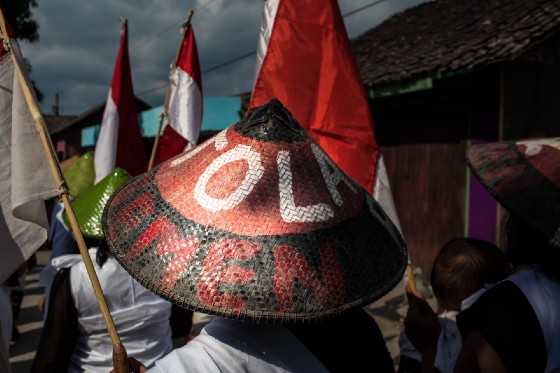
By October, their lengthy legal battle culminated with the Supreme Court ruling to uphold the farmers’ case against the governor and Semen Indonesia. It held that the environmental impact assessment approved by the previous governor was flawed, that it failed to show how the mining would prevent serious damage to the water basin, and that it had not taken the views of the community into account. The court instructed the provincial government to revoke the environmental permit.
In December, hundreds of villagers marched for some 135 kilometres from Kendeng to the governor’s office, to celebrate and demand the implementation of the court’s decision. But when they arrived at the office, with Sukinah’s ankles swollen from the long walk, a bureaucrat informed them that the governor had simply replaced the revoked permit with a new one, days after the Supreme Court decision.
The governor’s decision caused a public outcry. But the farmers were yet to reach their lowest ebb.
By March 2017, the Kartinis of Kendeng were back in Jakarta, with their feet encased in cement. They had secured a commitment from the president and a win in the Supreme Court, yet the project was still moving ahead. Protests seemed to be their last resort.
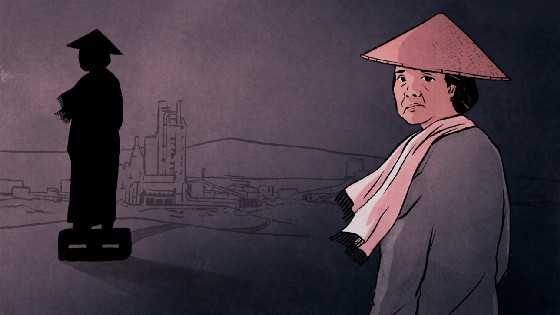
After maintaining the demonstration for several days, it was time for one of the nine, a 48-year-old named Patmi, to return home. The cement around her feet was cracked open and she went to rest at the offices of the Legal Aid Institute. That night, she began convulsing and vomiting, and early the next morning she died of a heart attack.
The news spread across WhatsApp. The Kartinis of Kendeng, still mourning their friend and traumatised, received a backlash on social media from Indonesians blaming them for Patmi’s death.
“We felt lost,” Sukinah told me. “We had lost our sister, and many people criticized our movement. But what could we do?”
A day after the tragedy, on March 22, President Jokowi met Gunarti, one of the Kartinis of Kendeng, in the palace for a second time. She told him that Ganjar had effectively overridden the promises Jokowi made in their first meeting. But the president demurred, suggesting they should talk to the governor, who had by now repeatedly ignored their demands. Gunarti told a scrum of reporters outside the palace of her deep disappointment, as hopes of stopping the project began to fade.

During the protests, a farmer named Parmi had been assigned to take care of Patmi, seeing to her needs as her feet were lodged in the cement. In Tegaldowo, she took me through the village to a beautiful wooden building. It is a langgar, a type of small mosque, built in memory of Patmi.
“It was Patmi’s lifelong dream to build a langgar,” she told me. “We decided to make it, after she breathed her last breath.”
Today, when I meet Sukinah, I see the same person whom I met three years ago. From her home, though, I can see the giant cement factory built over the karst. The company operates “legally” with the new permit the governor issued in 2017.
Sukinah and the other Kendeng farmers still struggle to stop it, while slowly but surely the mining has started to pulverise the karst. Her home serves as a headquarters for the campaign, in which the farmers gather and hold traditional Javanese ceremonies that strengthen the bonds of their movement, as they do today.
My visit coincides with the seventh day after the Islamic holiday of Idul Fitri, a day the Javanese celebrate by holding a rice cake party.
It begins with a performance of Punokawan. In Javanese puppet theater, Punokawan involves the characters Semar, Gareng, Bagong and Petruk. In this rice cake party scene, Semar, the wisest and oldest among the Punokawan, cautions the villagers to take care of the environment.

Then, the residents parade around the village with two groups of men carrying gunungan, mountains made of corn. They sing of Ibu Bumi, Mother Earth.
The event continues into the night as Sukinah leads a group of women farmers, followed by villagers who carry bamboo torches in their hands, heading to a sacred well. They sing the same song.
After surrounding the well and praying together, they go back to Sukinah’s house and celebrate by eating rice cakes together.
None of the setbacks have dampened the desire of the Kartinis of Kendeng to fight for the mountains. Even the death of Patmi ultimately gave the women a renewed sense of togetherness and purpose.

“For me and the other sisters, it brought us light,” Sukinah told me. “It fired up our enthusiasm. We knew we must not remain silent. We are not weak, and we must not lose.
“Because Patmi is still with us. Even though her body might have been buried, her soul was never buried.”
Indeed, looking back on her six years of activism, Sukinah does not see setbacks and despair. She sees an education. “I never went to school,” she said. “So I sought knowledge, and I found so much.”
She pointed to the environmentalists, lawyers and scientists she has met along the way, and her experiences outside her village. It was a journey that brought her both happiness and pride.
“Every step of the way we learned from people who were positive about the environment,” she said. “About the meaning of this life, what we live for.”
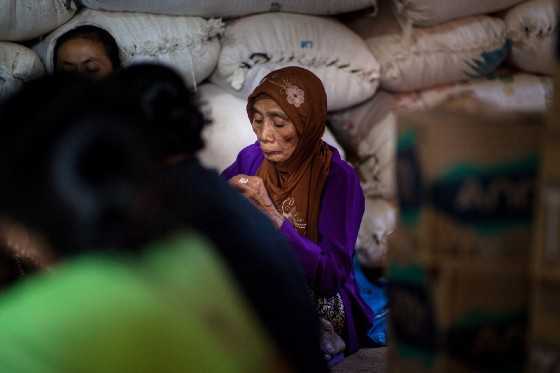
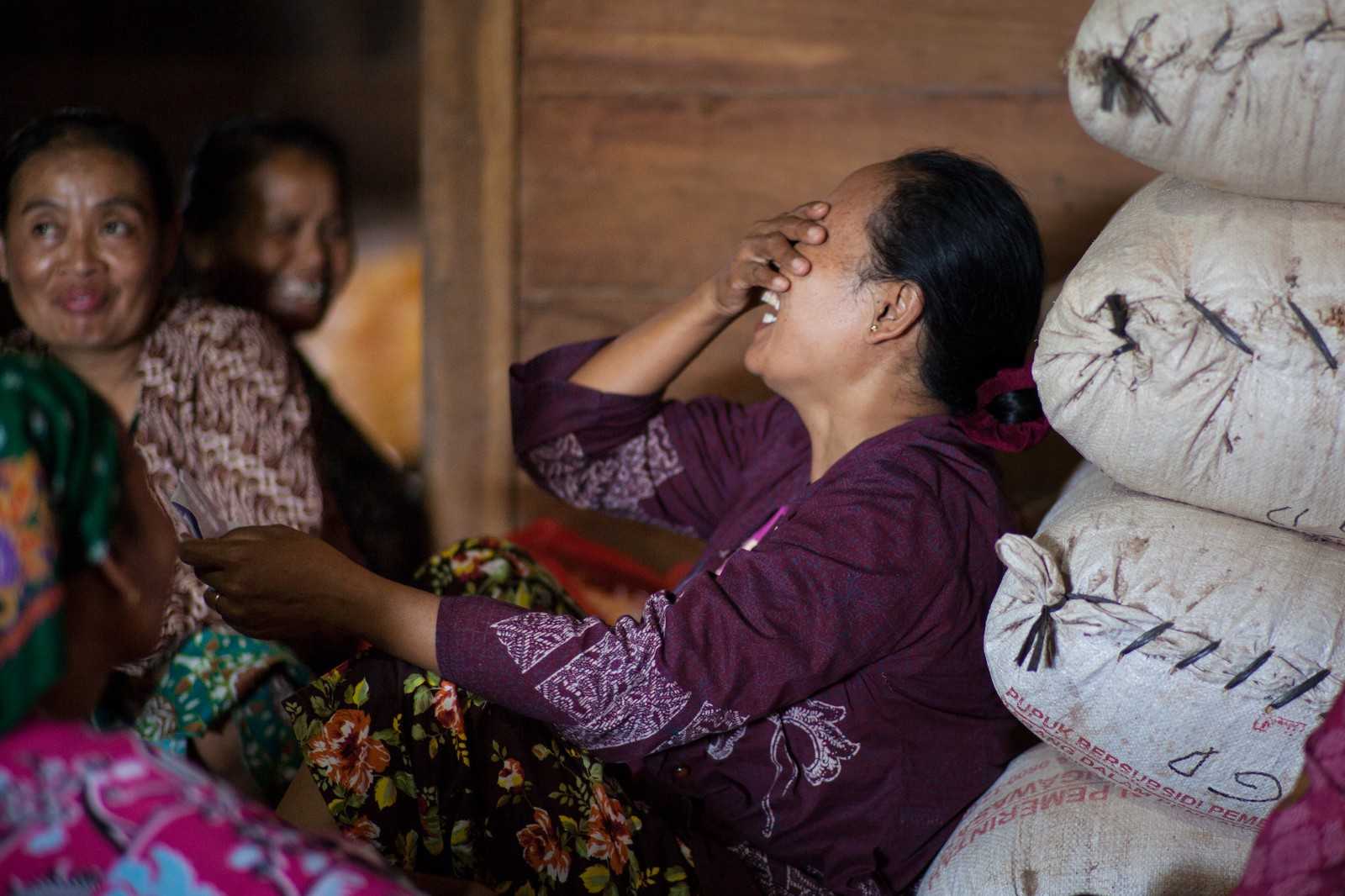
The time comes for me to say goodbye to Sukinah and the Kartinis of Kendeng. As I drive out of Tegaldowo, I pass the cement factory. It strikes me that it’s the support of a single governor — not the views of the people, or the law, or science, or what is right — that has the greatest influence over the development projects that shape people’s lives.
I left Kendeng with the sense that their movement was about fraternity. All of the members of their group had the same purpose and feelings, forged through friendship. Sedulur Sikep, their local belief, kept them united even after they lost their sister, Patmi. In the end, her death even made them stronger.
From my time with them, I could see how their lives and their movement are suffused with culture. Their culture and activism were so bound together that it was hard to tell where one ended and the other began. That culture is a beautiful, unique and local tapestry of Islam, Saminism and resistance, a belief in both the past and a sustainable future, that is completely at odds with the destruction of the environment by heavy extractive industries.
I also left with the belief that Patmi should be considered a heroine. She dedicated her life to safeguard the karst from destruction, because of her belief that it would provoke a water crisis. She sacrificed herself, knowing the dangers, for her community.
I worry that the Jokowi administration, elected with so much hope, will never understand this struggle. But seeing the Kartinis of Kendeng gives me a little hope about the future: that people will continue to resist and stand for their homeland, our homeland. For Sukinah, there is no other choice.
To see other articles, films and photos from The Gecko Project as they come out, follow us on Facebook, Twitter, Instagram and YouTube. Sign up to our mailing list here. The Gecko Project stories are available in Bahasa Indonesia at our Indonesian site here.
